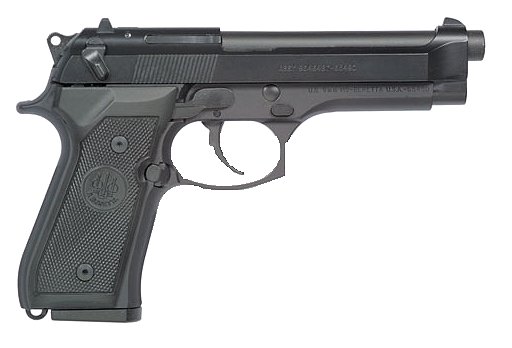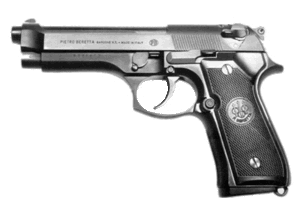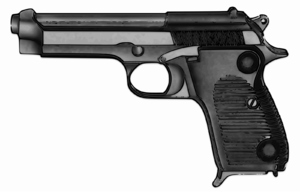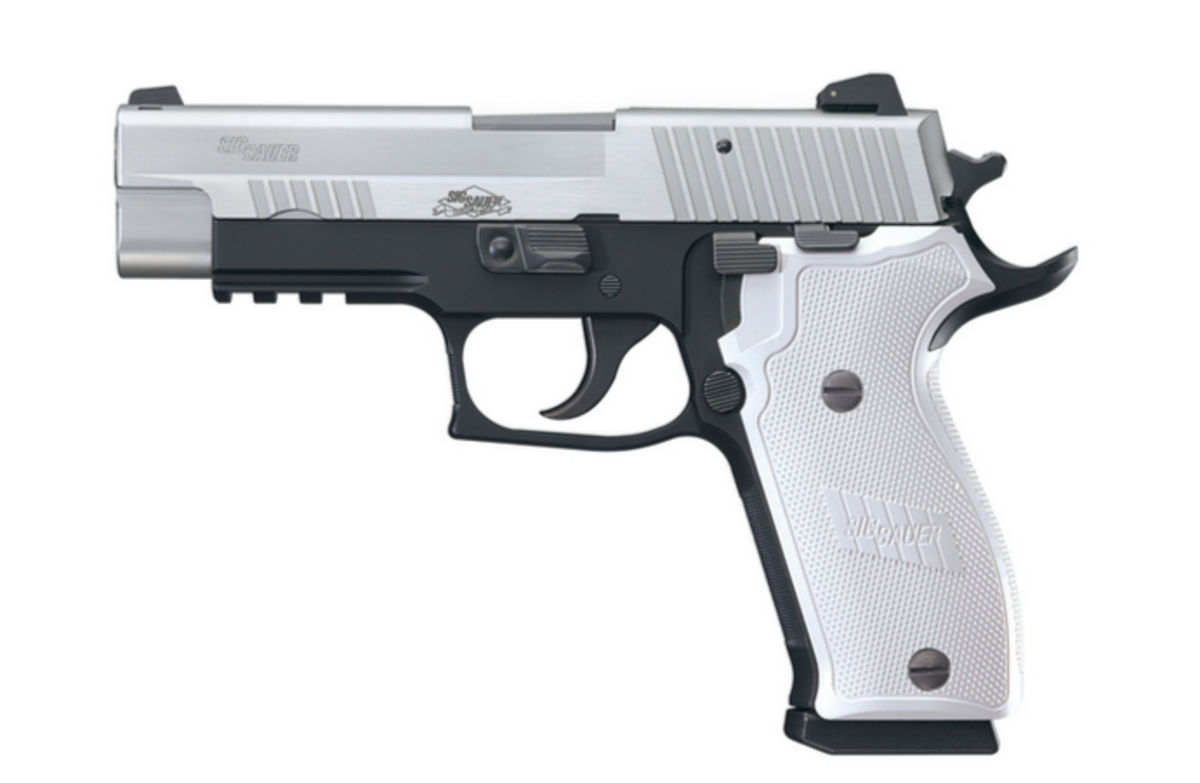- HubPages»
- Education and Science»
- History & Archaeology»
- Military History
Review of the Beretta 92F (M-9) Service Pistol
Beretta History
In 1490, gunsmith Maestro Bartolomeo Beretta was born in the town of Brescia in Northern Italy. The Renaissance was in full swing in Italy. The same year a 38 year old artist/inventor named Leonardo Da Vinci painted his famous Lady with an Ermine. During this explosion of artistic creativity there were also explosions of another sort. The sound of the Beretta Arquebus' rings in the Italian Wars, which would occupy most of the 15th century. A company is born; Fabbrica d'Armi Pietro Beretta 1526, cast in the fires of war and quenched by the creative freedom of the Italian Renaissance.
When one considers the cultural, industrial, and political influence that the Italian Peninsula has had on modern western civilization it is not hard to imagine why the United States would adopt Beretta's model 92 9mm pistol into service for its military in 1985. There are arguments on each side about the Beretta’s ability to replace the venerable M1911 .45 caliber. Some argued the 9mm was underpowered and lacked sufficient “stopping power”. Or that the Beretta was fussy in the sand drenched deserts of Iraq. On the other side of that argument is the fact that the Beretta holds twice the ammunition per magazine. So, ask yourself a question punk, you feel lucky? Would you rather have two rounds of 9mm or one shot of .45? Regardless of the critics the Beretta M9 has performed very well for the U.S. military for the last 27 years of service.
Beretta M9 Service Pistol

My Experience and more History
I qualified, carried, and trained with the M9 extensively during my time in the Marines. I never had ill-feelings toward it and found it a joy to shoot and maintain. That being said, I never had to take the M9 to the sand-box. I have seen M9’s shot under water without malfunctioning and have never experienced a high amount of malfunctions from a well maintained Beretta M9 service pistol. I can attest to the M249 SAW’s inability to function with magazines in the desert in Twenty-nine Palms, CA. but that is a different story. Overall, during my service, the pistol rarely ever malfunctioned, was extremely controllable for follow-up shots, and accurate.
Why all the haters?
As I did research for this article I was surprised at how many shooters; military and civilian hate the M9. I like Glocks, Sigs and Hk's too. One writer said he shot one for the first time and hated it. Maybe I am too defensive, but how can you really hate this pistol? (Feel free to comment if you do hate the Beretta, but please explain why). In 2003-04 after several reports from troops regarding malfunctions the government concluded the failures were due to a heavy phosphate finish on the magazines. Since the change failures have decreased significantly. (According to the government).
Nomenclature
The M9 is a short recoi lsemi-automatic, single-action/double-action pistol which uses a 15-round staggered magazine. The Beretta 92F (M9) is a big hefty thing for a 9mm. It looks more menacing than it actually is. At 8.54 inches in length and 2.5 lbs. fully loaded it is definitely not a well-qualified concealable carry pistol, but not supposed to be either. The Beretta has a 5.51 inch barrel which assists its accuracy; which makes it in my experience to be one of the most accurate out-of-the-box pistols I have ever shot. That being said, I have shot the Beretta’s competitor, the Sig P226 and let me tell you….. well…. I will tell you at the conclusion of the article about my thoughts on that.
Beretta’s ancestor a Desert Rat?
The Beretta 92F is the descendant of the M1951 which was developed by Pietro Beretta in the late 40’s early 50’s. Interestingly, as much trouble as the U.S. military had in the Iraqi deserts with the M9 (92F), the Egyptians appreciated the M 1951 for its reliability in desert conditions. The U.S. reported the problems were due to the magazines finish. The M1951 is an 8 round single-stack magazine, this could explain why. Also, there are too many other factors to really determine why the Egyptians reported the pistol to be so reliable, could be less-use or an unorganized data gathering method, or heck…. it was just very reliable. Another interesting fact was that the Beretta was in competition with one of my other favorites, the Tokarev TT-33, known in Egypt as the "Tokegypt". The Russian made pistol was not favored by the Egyptians even with intense pressure and incentives from the Soviet government.
Beretta 92F

Safety of Design
Early Problems
Early on the Army had problems with cracked frames. It is a good idea to inspect your Beretta by hanging the slide from your finger and tapping it with a brass hammer, it should ring. If it makes a thud your slide may be cracked. Rather than explain these problems I will let the U.S. general accounting office reports speak for themselves:
“As of October 18, 1988, a total of 16 slides from M9s or military-owned
Civilian versions of the M9 were known to have broken during field use
and laboratory testing. Four failures occurred during field use, and 12
during laboratory testing.”
-United States General Accounting Office
“In addition, frame cracks were detected at the contractor’s plant during
lot acceptance testing of the December 1987 and January 1988 production
lots. Lot testing procedures require that a sample of weapons (normally
3) be selected from each production lot (normally 6,000) and fired
to 5,000 rounds. After the test-firing is completed, the weapons are disassembled
and inspected. All of the sample weapons in the December
1987 lot as well as all of the sample weapons in the January 1988 lot
had cracked frames. As a result, both lots, totaling 12,000 weapons,
were not accepted by the Army.”
-United States General Accounting Office
“The Army considers the frame crack problem to be cosmetic in nature with no adverse effect on the weapon’s performance or reliability. Nevertheless, the frame cracks violate acceptance testing procedures specified in the contract and were the reason the Army rejected the December 1987 and January 1988 production lots, totaling about 2,000M9s. An engineering change proposal (ECP) has been implemented to correct the problem, and the previously rejected M9s have been reworked, tested, and accepted by the Army.”
-United States General Accounting Office, Government Operations, House of Representatives
Are Beretta’s safe?
One fact is that no one has been able to duplicate a breakage with any type of ammo other than uncertified. Since 1988, several governments have tried to duplicate these early breakages and have been unsuccessful. So, are Beretta’s safe, I believe so. Will I inspect mine more closely? Of course, I love my Beretta and I don’t want it getting hurt. As far as breakages go, I have personally witnessed what a “hot load” can do to a well-built pistol. I got a hold of some old reloads passed on to me from my father, fortunately I shot one out of a CZ-75, after the Fourth of July fireworks display (a gigantic boom, with sparks and smoke) I checked the pistol and it was fine. I threw that batch away. My brother was not so lucky, he got a hold of the same batch and shot it form his CZ Rami with a composite frame, and it cracked, and luckily no one was hurt.
At the range
When I instruct new shooters; the Beretta is my choice since it is a good way to introduce my student to the recoil of a 9mm. Besides, after being spoiled by shooting a .22 caliber bull-barrel everything feels brutal. It is an excellent duty pistol and range gun. With fantastic accuracy, good capacity and weight it is widely accepted as a very shootable pistol for the masses. I have never met anyone, in person, who didn’t love shooting this pistol.
Back to the Sig P226
When I was a young buck I went shooting with a good friend who bought a used P226. I had only shot the P220 (single-stack .45) which I thought was unbelievably accurate. I was glad to find out that this beat-up old Swiss/German hybrid was the same. The P226 was in the running in the 80’s to be the next standard issue pistol. My hunch, it was too expensive. Which would I choose? I will save that for another article, Sig P226 vs. Beretta 92F.
Beretta 1951









